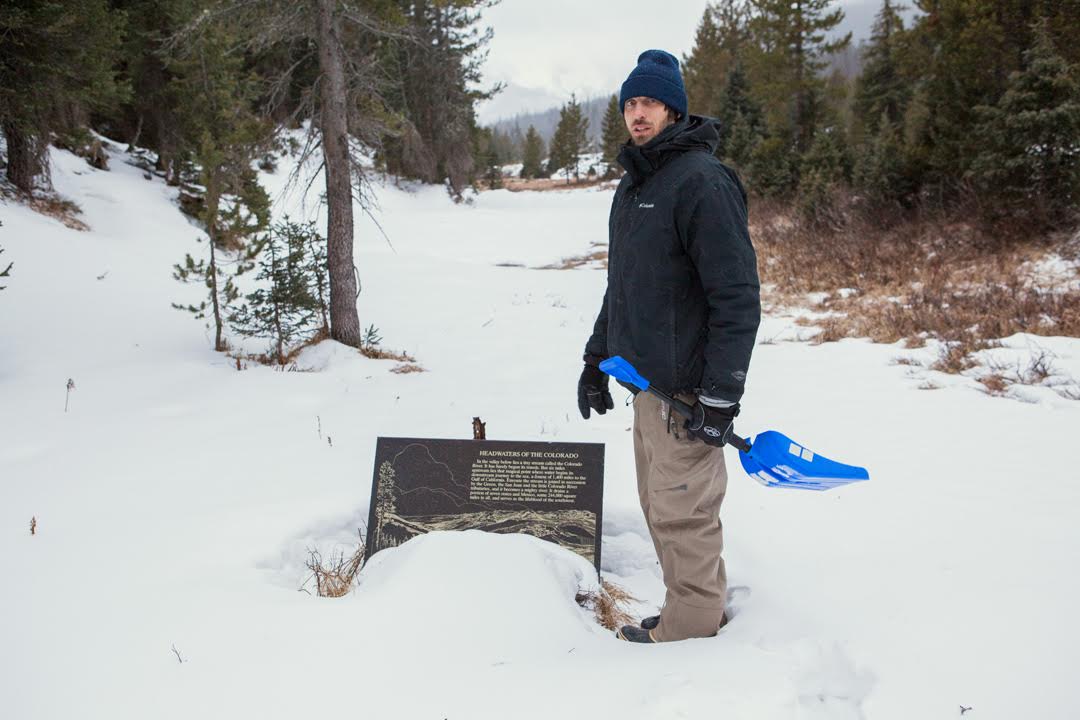
by DGR News Service | Oct 29, 2017 | Listening to the Land
Featured image by Michelle McCarron
Editor’s note: This is the latest installment from Will Falk as he follows the Colorado River from headwaters to delta, before heading to court to argue for the Colorado River to be recognized as having inherent rights. More details on the lawsuit are here. The index of dispatches is here.
by Will Falk / Deep Green Resistance Southwest Coalition
To truly understand someone, you must begin at her birth. So, Michelle and I spent the last two days looking for the Colorado River’s headwaters in the cold and snow above La Poudre Pass on the north edge of Rocky Mountain National Park. The pass is accessible by Long Draw Road off of Colorado Highway 14. Long Draw Road is an unpaved, winding, pot-holed trek that takes you fourteen miles through pine and fir forests and past the frigid Long Draw Reservoir before ending abruptly in a willow’d flat.
We found the road covered in an inch of frosty mud which required slow speeds to avoid sliding into roadside ditches. The drive served as a preparatory period in our journey to the Colorado River’s beginnings. The road’s ruggedness and incessant bumps combined with sub-freezing temperatures to ask us if we were serious about seeing the Colorado River’s headwaters. I was worried that Michelle’s ’91 Toyota Previa might struggle up the pass, but the van continued to live up to the Previa model’s cult status.
Long Draw Road foreshadowed the violence we found at the river’s headwaters. Swathes of clearcut forests escorted the road to the pass. The Forest Service must be too lazy to remove single trees from the road as they fall because Forest Service employees had simply chainsawed every tree within fifty-yards to the left and right of the road. About 3 miles from the road’s end, we ran into a long, low dam trapping mountain run-off into Long Draw Reservoir. We expected to find wilderness in La Poudre Pass, so the dam felt like running into a wall in the dark.
The clearcuts, dam, and reservoir are grievous wounds, but none of them are as bad as the Grand Ditch. We walked a quarter-mile from the end of Long Draw Road where we found a sign marking the location of the river’s headwaters. On our way to the sign, we crossed over a 30-feet deep and 30-feet wide ditch pushing water west to east. We were on the west side of the Continental Divide where water naturally flows west. We contemplated what black magic engineers employed to achieve this feat. The ditch was as conspicuous in La Poudre Pass as a scarred-over gouge on a human face.
The Grand Ditch was begun in the late 1880s and dug by mostly Japanese crews armed with hand tools and black powder. It was built to carry water, diverted from the Colorado River’s headwaters, east to growing cities on Colorado’s Front Range. Close to two feet of swift water ran through the ditch. We learned that even before melting snowpack forms the tiny mountain streams identifiable as the Colorado River’s origins, water is stolen from her. Pausing in a half-foot of powder, I wondered whether the water stored here would end up on a Fort Collins golf course or stirred by the fins of a Vaquita porpoise in the Gulf of California.
Study the Colorado River’s birth and you’ll learn she is born from a wild womb formed by heavy winter clouds, tall mountain peaks, and snowpack. But, she emerges from this womb immediately into exploitation. In La Poudre Pass, the young Colorado River tastes the violence that will follow her the rest of her life.
To repost this or other DGR original writings, please contact newsservice@deepgreenresistance.org
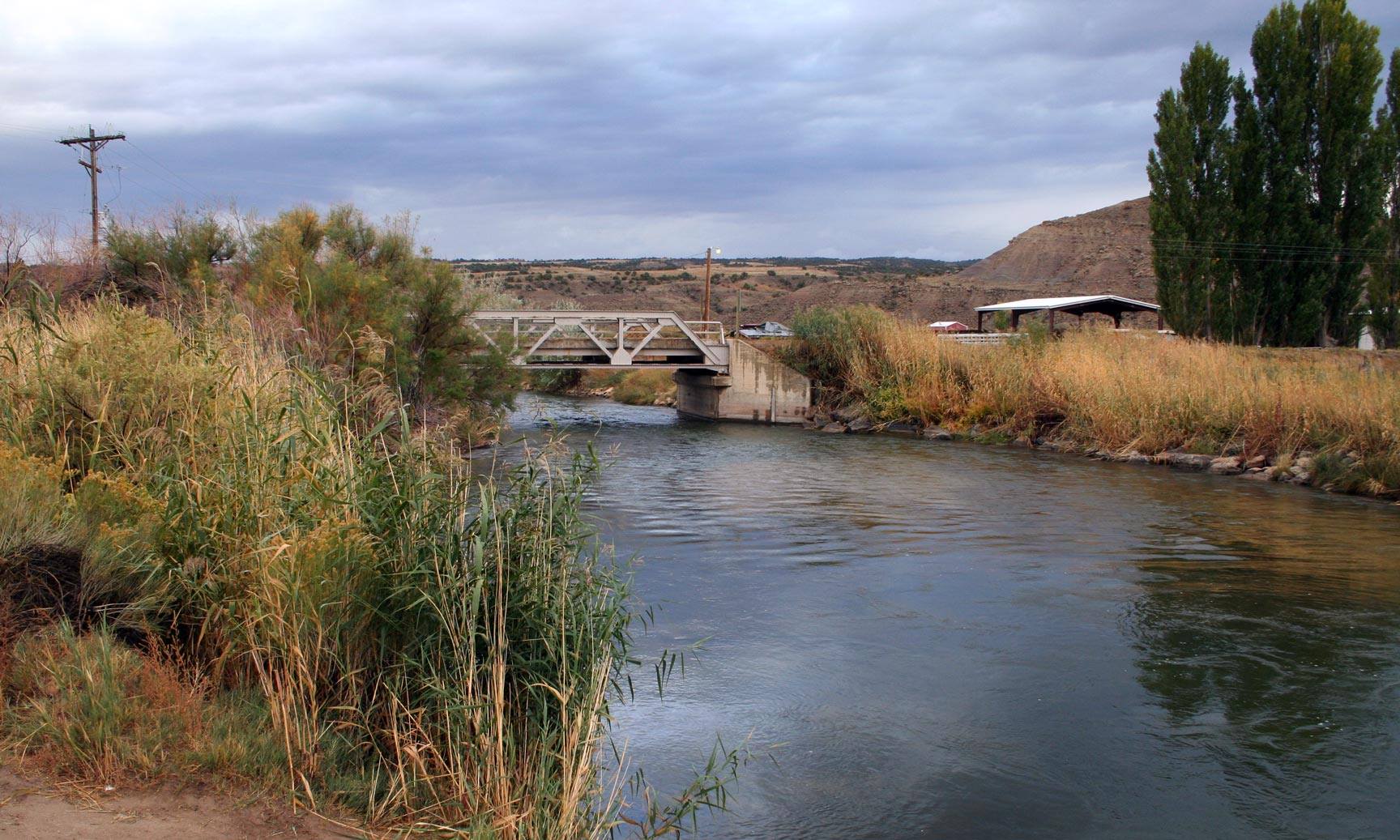
by DGR News Service | Oct 25, 2017 | Listening to the Land
Featured image by Michelle McCarron
Editor’s note: This is the latest installment from Will Falk as he follows the Colorado River from headwaters to delta, before heading to court to argue for the Colorado River to be recognized as having inherent rights. More details on the lawsuit are here. The index of dispatches is here.
by Will Falk / Deep Green Resistance Southwest Coalition
When I agreed to serve as a “next friend” to the Colorado River in a first-ever federal lawsuit seeking personhood and rights of nature for the river, I agreed to represent the river’s interests in court. On a general level, it’s not difficult to conceptualize the Colorado River’s interests: pollution kills the river’s inhabitants, climate change threatens the snowpack that provides much of the river’s water, and dams prevent the river from flowing to the sea in the Gulf of California.
We seek personhood for the Colorado River, however, and this entails personal relationship with her. Water is one of Life’s first vernaculars and the Colorado River speaks an ancient dialect. Snowpack murmurs in the melting sun. Rare desert rain runs off willow branches to ring across lazy pools. Streams running over dappled stones sing treble while distant falls take the bass.
Personal relationship requires that you learn who the other is. Our first day in court is scheduled for Tuesday, November 14, at 10 AM [you’re invited to attend]. So, I will spend the next few weeks leading up to the court date traveling with the river, sleeping on her banks, and listening. I will ask the Colorado River who she is, and then, if she’ll tell me, I’ll ask her what she needs.
When I arrive at the United States District Court in Denver, I hope to bring the Colorado River’s answer.
(I’ll post notes from the road. And, I’m excited to be meeting up with the brilliant photographer Michelle McCarron soon.)
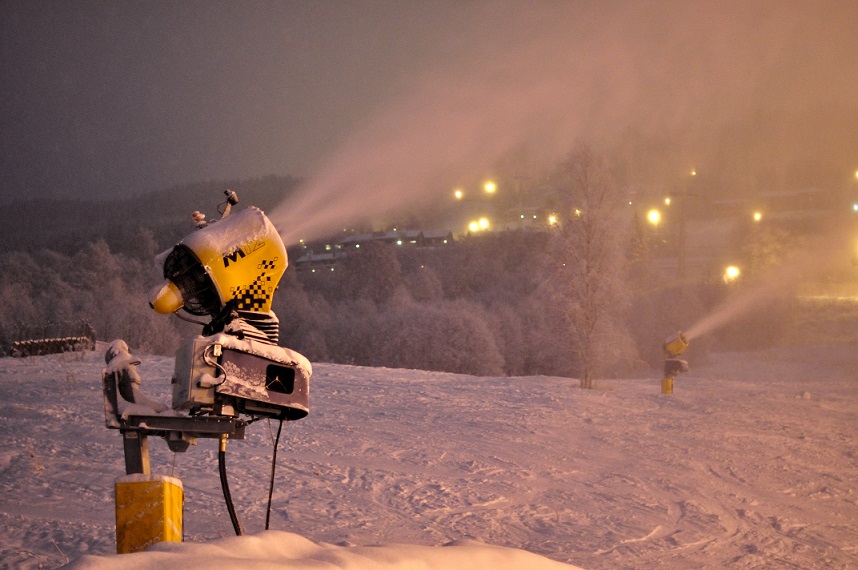
by Deep Green Resistance News Service | Sep 22, 2017 | Strategy & Analysis
Editor’s note: This is the third installment in a multi-part series. Browse the New Park City Witness index to read more.
by Will Falk / Deep Green Resistance
Author’s Note: A member of Park City’s city government recently asked me why I write about Park City when Park City is doing so much for the environment, compared to other communities. I hope my respect for this person and the question is reflected in the days I spent contemplating an answer. In order to answer this question, I must answer several related questions. These answers give me a chance to be transparent about my motivations for writing this New Park City Witness series.
Underlying the question “Why do I write about Park City?” is the question “Why do I write at all?”
One reason I write is reflected in an experience I had, a few days ago, in Summit Land Conservancy’s offices. On a shelf, in a conference room, a book’s plain green and white cover grabbed my attention. It was the first edition of Park City Witness, published in 1998. Having recently finished the second edition of Park City Witness, and learning the first was long out of print, I was excited to see an original copy. I asked Summit Land Conservancy executive director Cheryl Fox if I could borrow the book.
Books, as anyone who has read a few knows, have the power to choose their readers. While reading the preface to the first Park City Witness, I knew I had been chosen. Maybe Cheryl knew I needed to read the book, too, because she wrote the preface to the first Park City Witness. In this preface, she quoted author Stephen Trimble who, in 1997 “speaking to a collection of writers and slow-growth activists amid the crowded shelves of Dolly’s Bookstore…explained how important it is for people who can write to write.”
Twenty years later, and Trimble’s words feel like they were spoken directly to me. I can write and because I can write, it is important for me to write.
If it’s important for people who can write to write, it’s even more important for people who can write to write what needs to be read. While nearly two hundred species go extinct daily, while every mother’s breastmilk contains known carcinogens, while every major biosphere on Earth collapses around us, does anything need to be read more than encouragement for stopping the destruction?
I think the answer is obviously no. Many artists share this feeling. My favorite political cartoonist, Stephanie McMillan, in an essay titled “Artists: Raise Your Weapons” writes “…in times like these, for an artist not to devote her/his talents and energies to creating cultural weapons of resistance is a betrayal of the worst magnitude, a gesture of contempt against life itself. It is unforgivable.”
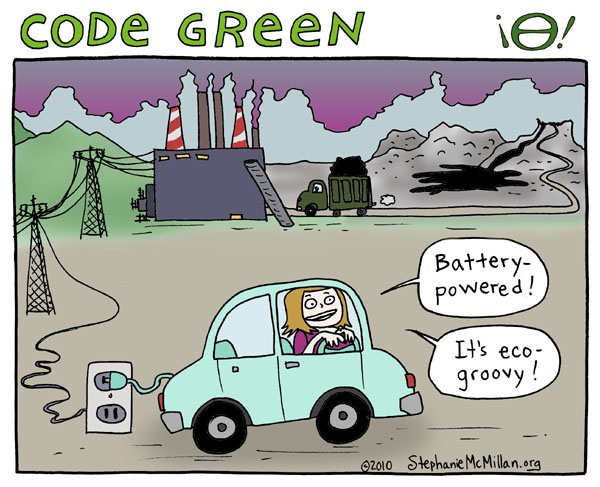
Derrick Jensen, reflecting on a decades-long writing career with over twenty published books, writes, “…if we judge my work, or anyone’s work, by the most important standard of all, and in fact the only standard that really matters, which is the health of the planet, my work (and everyone else’s) is a complete failure. Because my work hasn’t stopped the murder of the planet.”
***
I write about Park City because of the privilege and power that exist here.
It may or may not be true that Park City does more than other communities to protect the environment. We must remember that Park City’s human population depends on an ecologically unnecessary and problematic industry – tourism – for its continued existence. Ask yourself: Do corporate marketers spend millions of dollars on enticing hundreds of thousands of people to board greenhouse gas emitting planes from around the world to visit… Kamas? Are tons of coal burned to pump hundreds of millions of gallons of water up mountainsides to snow-making machines in…Heber?
There’s a sense in which it really doesn’t matter whether Park City is doing more than other communities. My almost-five-year-old niece is becoming notorious for her sassy one-liners and refusing to let adults get away with their bullshit. I shudder when I think about looking her in the eye when she’s my age. She’s not going to care if Park City did more than other communities to stop the destruction of the world. She’s going to care that she can raise children in a world with clean water, clean air, and a habitable climate. She’s going to care, if she does have a baby, that she can feed her baby without passing carcinogens through her breastmilk to her baby.
I write about Park City because it doesn’t matter which community is more environmentally-friendly. The only thing that matters, while life on earth collapses, is stopping the collapse. Stopping the collapse will require confrontation with those in power and this confrontation will require material resources. Close to 80% of Park City’s population is white and white people benefit the most from the exploitation of the natural world. People of color, around the world, have long formed the frontlines of the environmental movement. Justice demands that white people join them there. Similarly, the median property value in Park City is $868,100, and the median household income is $105,000, which is almost double the national average. Park City has more than most communities, so Park City should give more than most communities.
***
The most important reason I write is because I’m in love. I’m in love with Gambel oak, maple, and aspen. I’m in love with the way they offer one last display of visual ecstasy in their changing colors before sleeping for the winter. I’m in love with rain and snow, the mystical moment rain becomes snow on a northerly autumn wind, and the water both of them bring. I’m in love with my partner, who was born here. I’m in love with her big, gorgeous brown eyes. I’m in love with the way her eyes become even bigger with warmth when she hears joy in her loved ones’ voices.
In short, I’m in love with life – a life made possible by Park City’s natural communities. We may experience life because the water we drink here, the air we breathe here, and the food we eat here combine to give us physical bodies. To love life is to love our bodies and loving our bodies, we must listen to them.
My body tells me to write. If I go more than a few days without pen, notebook, and solitude, the physical symptoms of anxiety affect me. I become fidgety, easily distracted, and slightly sick to my stomach. The longer I go without writing something coherent, the worse these symptoms get.
My body speaks through these symptoms. Through fidgetiness, my body tells me to act; writing, after all, is an action. The troubles with concentration are a warning to use my focus or lose it. Nausea accompanies and symbolizes the writing process, for me. There are times I’ve tried to quit writing, tried to shirk the hours of rumination, research, and drafting. But, the best words are not mine. They are given to me. Unreleased, they pool like bile and there is no relief until they’re written.
I used to be embarrassed to admit that I write to feel better. This seemed selfish to me. It felt impure. But, now I know that I do not create the anxiety anymore than I create the swelling that accompanies rolling an ankle. The swelling is a gift, a gift from my body, from the forces of life creating my body. My body, through swelling, tells me not to walk on the rolled ankle, and tells me to let the ankle heal.
Wherever we look there are bodies swelling, wounded, and scarred. Forests are clearcut, rivers no longer flow to the sea, and canyons are flooded by reservoirs. Life speaks through bodies – ours’, forests’, rivers’, canyons’ and so many more. Life tells us to let these bodies heal.
Before healing can take place, the injury must be stopped. Life, everywhere, is being injured. It does not matter how we stop the injury. But, we must stop it. There are a growing number of us in Park City who are willing to do more than is currently being done. We are willing to place our bodies in front of those destroying the planet – bodies we love as much as you love yours. Many of us are young, lack the wealth of older generations, look at a future growing darker and darker, and say, “This must stop.”
We could use your help.

by Deep Green Resistance News Service | Sep 8, 2017 | Human Supremacy
Featured image: Bonanza Flats
Editor’s note: This is the second installment in a multi-part series. Browse the New Park City Witness index to read more.
by Will Falk / Deep Green Resistance
Before murdering millions during the Holocaust, the Nazis referred to Jews as rats. After murdering 17 people and lobotomizing some of his victims in an attempt to preserve them, alive but in a catatonic state, serial killer Jeffrey Dahmer explained, “…I tried to create living zombies…I just wanted to have the person under my complete control, not having to consider their wishes, being able to keep them there as long as I wanted.” In vivisection labs, scientists commonly cut animals’ vocal cords, so the scientists don’t have to listen to the animals scream.
These examples illustrate a common psychological phenomenon: In order to commit atrocities, humans characterize their victims as sub-human, objectify and silence them. It is, after all, much easier to destroy the less than human and the voiceless.
Civilized humans are currently destroying the natural world. Water continues to be polluted, air is poisoned, soil is lost faster than it can be replaced, and the collapse of every major biosphere across the planet intensifies. This destruction is made possible through the objectification and silencing of the natural world. The American legal system defines nature as property. Capitalism calls nonhumans “natural resources” and only values them as profits. The Abrahamic religions remove the sacred from the natural world and give it to an abstract, patriarchal God who somehow exists beyond the natural world.
It’s no wonder, then, that many in Park City participate in the silencing of nature, too. Many Parkites, for example, celebrate the existence of thousands of acres of land designated as “protected open space.”
There are several problems with this. First, the term “open space” is dishonest and works to objectify nonhumans while silencing the natural world. Objectification and silencing pave the way for exploitation. Second, as long as runaway climate change threatens snowfall, creates droughts, and contributes to wildfire intensity, no natural community in Park City can truly be considered “protected.” To call endangered natural communities protected leads to complacency, and we cannot afford complacency while the world burns.
The “Save Bonanza Flats” Campaign, which raised $38 million to protect 1,350 acres of high-altitude land from development, was a beautiful expression of the community’s love for life. Do not mistake me, I am deeply glad that Bonanza Flats is safe from hotels and multi-million dollar homes. But, Bonanza Flats is not safe, and will never be safe, as long as the dominant culture’s insatiable appetite for destruction is ensured by humans who believe the natural world is nothing more than lifeless matter for humans to use.
***
While working on this essay, I decided to head up Guardsman Pass to ask those who live in Bonanza Flats what they think about “protected open space.” Hiking is contemplative for me. I was asking myself just how, exactly, I thought the nonhumans in Bonanza Flats would express their feelings about being “open space” when I rounded a bend to find myself face to face with a bull and cow moose grazing among the aspen.
The aspen were mature, many of them boasting trunks eighteen and twenty-four inches in diameter. They grew closely together, creating an ancient silvan atmosphere with dappling silvers, golds, and greens. The afternoon sunshine mixed with aspen leaves to give me the slight, pleasant sense of existential vertigo that accompanies the timelessness of life’s original joys.
I met the bull moose’s gaze. My bones recognized their nearness to a greater collection of their kindred. My muscles, observing the moose’s, remembered their first purpose and tingled with excitement. His eyes, browns in brown, reflected all the different woods he’d ever strode through. I’m not sure how long we considered each other, but when he finally looked away, his wisdom was undeniable.
And, I had my first answer: To share an aspen grove with a bull moose in Bonanza Flats, is to know this space is anything but open.

I continued on to find a stone to sit on and watched the lazy orange flutter of butterfly wings. I listened to the soft hum of bees, the breeze through quaking aspen leaves, and the hypnotic click of grasshoppers in flight. I saw mule deer bounding over a fence, a red-tailed hawk riding wind pockets, and squirrels tossing pine cones to the ground, narrowly missing human heads (for the squirrels’ winter caches). All these beings confirmed the lesson the bull moose taught me. Bonanza Flats is not open, it is filled with countless living beings.
An approaching rain cloud brought tidings of the radical interconnectedness of all life and proved that Bonanza Flats is not truly protected. When the cloud arrived to give its water, the rain evaporated well before it reached us. I was reminded that Bonanza Flats, like all communities along the Wasatch Range, depend on snowpack for life-giving water. Simple arithmetic tells us that as long as total snowpack diminishes decade after decade, as it has been since the 1950s, sooner or later there won’t be enough water left.
While Bonanza Flats is safe from the developers’ bulldozers and chainsaws, many threats, just as deadly, still exist. Marssonina fungus spores, aided by climate change, could spread over aspen leaves until they no longer quake. Shorter winters allow the tiny pricks of too many tick bites to suck moose lives away. The worrisome scent of wildfire smoke haunts the wind. And, the asthmatic cough of children brought to the mountains by their parents to escape the Salt Lake Valley’s terrible air quality ring across Bonanza Flats’ trails.
***
Not all humans have objectified and silenced the natural world. For the vast majority of human history, humans lived in balance with the natural world we depend on. We lived in this way, in part, because we developed cultures that taught the sacredness of the natural world.
I’m writing this from the eastern edge of the Great Basin where the Western Shoshone, Paiute, Goshute, Washo and others lived sustainably for millennia. Much of my work in the region has been to protect pinyon-juniper forests from government-sponsored clearcuts. The forests make poor livestock grazing and ranchers make more money when the forests are replaced with grasses, so the forests are demonized. And, just like the demonization of Jews led to the Holocaust, the demonization of pinyon-juniper forests leads to millions of acres of clear-cuts.
Food from pinyon pine nuts and medicine from juniper trees were staples in many of the Great Basin’s traditional cultures. Pine nuts and juniper berries can be harvested without damaging the forests, so native peoples lived on what the land freely gave. In my research, I stumbled upon the transcript of a presentation[1] Glenn E. Wasson, a Western Shoshone man, gave at a pinyon-juniper conference hosted by the University of Nevada-Reno, the United States Forest Service, and the Bureau of Land Management. His words describe his people’s spirituality and represent a healthy relationship with the natural world.
Wasson said, “Each living entity constitutes a link in the chain of life. All those seen and unseen, all who grow from the ground, all those who crawl, all those who swim, all those who walk on legs, all those who fly, are all intertwined in the chain of life. Each plays a vital role in the keeping of a strong, healthy, and living Mother Earth, who provides each and every entity with all the necessities for life.” Contrast Wasson’s worldview with the dominant culture’s conception of nature as property, as resources, as objects and we begin to see why we’re in the mess we’re in.
While criticizing the Forest Service and BLM’s treatment of pinyon-juniper forests, Wasson described the mindset all of us must embrace. He said “…the cutting down of a single living tree is sacrilegious – the cutting down of a forest – UNTHINKABLE!” Until we begin to see individual nonhumans as sacred and natural communities worthy of our utmost respect, the destruction will continue.
Simply changing our language will not stop the destruction and I am not criticizing anyone’s efforts to protect Bonanza Flats from development. We need much more than better words and any land that stands free of development today, has a chance to stand free of development tomorrow. Land developed today may take decades to recover.
It’s not just Bonanza Flats. Park City boasts 8,000 acres of so-called protected open space. These are not protected open spaces. These are living natural communities where countless nonhumans live with lives as valuable to them as yours is to you. And, their lives are under attack.
I’m not writing anything you don’t already know. Most people in Park City are concerned about the natural world. Unfortunately, it appears that most Parkites are more interested in using the natural world, than in saving it. Why do I say this? Well, ask yourself, do most people in Park City spend more time confronting the forces destroying snow, or more time skiing on it? Do most people spend more time working to protect threatened Canada lynx, or more time mountain biking through Canada lynx’ homes? Do most people spend more time trying to save Colorado Pikeminnows, or more time flying fishing the waters Colorado Pikeminnows swim through?
There’s nothing wrong with enjoying the natural world. But, nonhumans do not exist for human enjoyment, they exist for themselves. It is only through centuries of cultural conditioning, teaching us to see the natural world as full of objects for our use, that some humans find nothing wrong with spending more time riding bikes than fighting for our nonhuman kin.
Life is created by complex collections of relationships formed by living creatures in natural communities. Water, air, soil, climate, and the food we eat depend on natural communities. The needs of these communities are primary; morality, the efforts of our daily lives, and our cultural teachings must emerge from a humble relationship with these natural communities. True sustainability is impossible without this.
Not long ago, all humans lived in humble relationships with natural communities. We developed traditional cultures that were rooted in the connectedness of all living beings. These cultures insisted upon the inherent worth of the natural communities who gave us life. Members of these cultures did not know “open spaces,” they knew places filled with those who grow from the ground, those who crawl, those who swim, those who walk on legs, and those who fly.
The dominance of a culture that objectifies and silences nature and calls natural communities “open space” enables its destruction. This culture has pushed the planet to the verge of total collapse. To avert collapse, the destruction must stop. We must create cultures where the exploitation of individual nonhumans is sacrilegious, and wholesale environmental destruction is unthinkable. We must stand in solidarity with all those – human and nonhuman – who share this living community we call Park City.
[1]Wassen, G.E. 1987. The American Indian response to the pinyon-juniper conference. In: Everett, R.L., comp. Proceedings: Pinyon-juniper conference. Gen. Tech. Rep. INT-GTR-215. Ogden, UT: U.S. Department of Agriculture, Forest Service, Intermountain Research Station: 38-41.
To repost this or other DGR original writings, please contact newsservice@deepgreenresistance.org
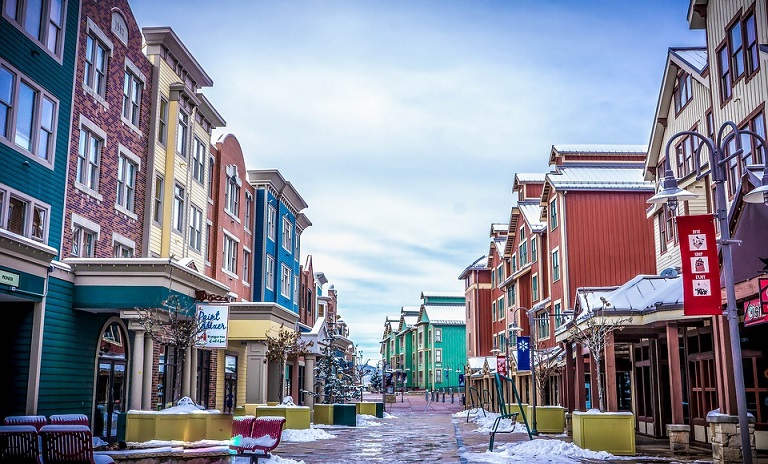
by Deep Green Resistance News Service | Aug 22, 2017 | Strategy & Analysis
Editor’s note: This is the first installment in a multi-part series. Browse the New Park City Witness index to read more.
by Will Falk / Deep Green Resistance
In Park City, the task is clear: Stop climate change, or the snow stops. Snowpack is the region’s freshwater supply and water is life. So, stop climate change or the community will lose life.
This is not news to most Parkites. And, thankfully, many Parkites have taken, at least, some kind of action. Park City Municipal Corporation hopes to achieve carbon neutrality, for the whole community, by 2032. An electric bike program was recently introduced, and electric city busses now run routes through town, in an effort to reduce carbon emissions. In a truly amazing display of community generosity, $38 million was raised to protect Bonanza Flats from development.
Meanwhile, there are a growing number of us in Park City, and across the country, who have lost faith in the traditional tactics employed by the environmental movement for creating change.
We voted. Many of us helped Barack Obama gain the presidency only to see American natural gas production increase by 34% and crude oil production increase by 88% since George W. Bush’s final year in office. Our votes couldn’t stop Donald Trump from gaining the presidency and everyday brings more news of his insanity. The EPA is gutted. The United States pulled out of the Paris Climate Accord. And, climate change deniers occupy many of the federal government’s most powerful positions.
We reduced, reused, and recycled. Then, we learned that the general consensus amongst climate scientists is that developed nations must reduce greenhouse gas emissions 80% below 1990 levels by 2050 to avoid runaway climate change. While it was still funded, the EPA reported that small businesses and homes accounted for 12% of total US greenhouse gas emissions while personal vehicles accounted for less than 26% of total US emissions. Based on these numbers, we realized that even if every small business and home in America reduced its emissions to zero and each American drove cars that emitted no greenhouse gas, the United States wouldn’t even come close to that 80% goal.
We participated in traditional conservation efforts. We helped to save Bonanza Flats from the bulldozers and chainsaws. But, we have not yet saved Bonanza Flats from the droughts, the wildfires, the fungus-killing aspens, and the pine beetles all made worse by climate change.
We are ready for escalation. We are ready for direct action.
**
Beneath the positivity, the small victories, and the feel-good atmosphere characterizing life in a mountain town like Park City, a desperation quietly grows. Climate change worsens, mass extinction intensifies, and natural communities collapse. Parents and grandparents fear for the futures of their children and grandchildren. Older generations approach the end of their lives worrying that they failed the younger generations. Younger generations wonder if they truly are disempowered, or if disempowerment is an illusion ensured by the apathy they’ve been labelled with.
For the most part, the desperation remains unacknowledged, unnamed, and repressed. Removed from the violence producing our material comforts and granting us the ability to live in a place like Park City, many never feel the desperation. Those who do doubt the authenticity of their intuition and wonder if the desperation is a sign of mental illness, proof that something is wrong with them, or a character flaw. When the desperation is expressed, those who point it out are called alarmists, conspiracy theorists, and sensationalists. When the reality described is too obvious to ignore, those who describe it are accused of causing paralysis and depression.
Nevertheless, the planet’s health is critically threatened. And, things are getting worse. We must act urgently and decisively. For those of us who know this, the question becomes, “How do we encourage others to act with the necessary urgency and decisiveness?”
***
In 2012, the Summit Land Conservancy published the second edition of Park City Witness: A Collection of Essays and Artwork Celebrating Open Space. In her introduction, Cheryl Fox – Executive Director of the Summit Land Conservancy – wrote, “Today we face unprecedented challenges to our natural environment. Solving this problem is the moral challenge of our century. The question we must ask is not ‘what can I do?’ but ‘what is the right thing to do?’”
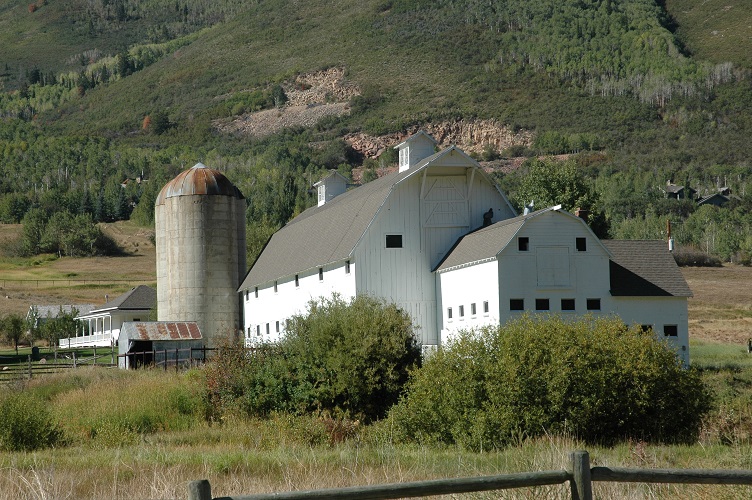
I completely agree with her. Several months before I read her words, I wrote in my essay “Park City is Still Damned,” “Don’t ask, ‘What can I do?’ Instead ask, ‘What needs to be done?’”
So, what is the right thing to do? What needs to be done? Ms. Fox concluded her introduction with, “I encourage you to read this book. Then go out to the trails, the mountains, the creek that you have helped to save. Watch for angels or demons and the messages they send, and then bear witness…”
It’s been five years since Summit Land Conservancy published its celebration of open space in Park City Witness. In that time, the list of the indicators of ecological collapse has only grown longer. Witnesses, testifying in court, take an oath to tell the truth, the whole truth and nothing but the truth. There are angels on the trails, the mountains, and in the creeks. But, there are demons, too. If we only bear witness to beauty, to optimism, and to celebration, we are liars. Telling the whole truth demands that we confront the demons, no matter how horrifying they are.
I have devoted my writing career to two principles: The land speaks. And, I have a responsibility to communicate what the land says as best I can. I hear the land speak of beauty. I also hear the land speak of horror. In Park City, while most writers and most artists focus on stories of beauty, who will confront the stories of horror?
We need new Park City witnesses. I cannot ask anyone to do what I myself am not willing to do. So, I commit, publicly, to being a new Park City witness. One who lives as honestly as possible with two realities. There is beauty and there is horror. The horror will consume the beauty if it is not confronted, described, and resisted.
To give my commitment substance, I have acquired a reliable vehicle, spent weeks researching, cleared my schedule, and formed a plan to visit places in Park City and across Utah where horror threatens to overwhelm beauty. These are places like the planned site for the Treasure Hill development, the Uintah Basin, oil refineries in North Salt Lake, the White Mesa uranium mill, and the coal mines in Price. My experiences will form a place-based series. Each essay will grow organically from the natural community it is written from. I welcome community discussion, comments, and feedback. The Deep Green Resistance News Service has graciously agreed to publish the writing this journey produces and you can follow along here. Please feel free to contact me.
My purpose is simple: In each place, I will search for beauty and I will search for horror. Then I will ask of that place, “What do you need?” I will listen for as long as I need to, knowing that the land rarely speaks in English and rarely observes a time recognizable by common human patience. After this, I will write. I will write as honestly as possible.
I hope to give a voice to those who feel the desperation. I hope to comfort those who feel crazy for the intensity of their concern. I hope to demonstrate that their concern is justified. I hope to catalyze the courage we so desperately need to resist effectively.
I hope to be a new Park City witness.
To repost this or other DGR original writings, please contact newsservice@deepgreenresistance.org








